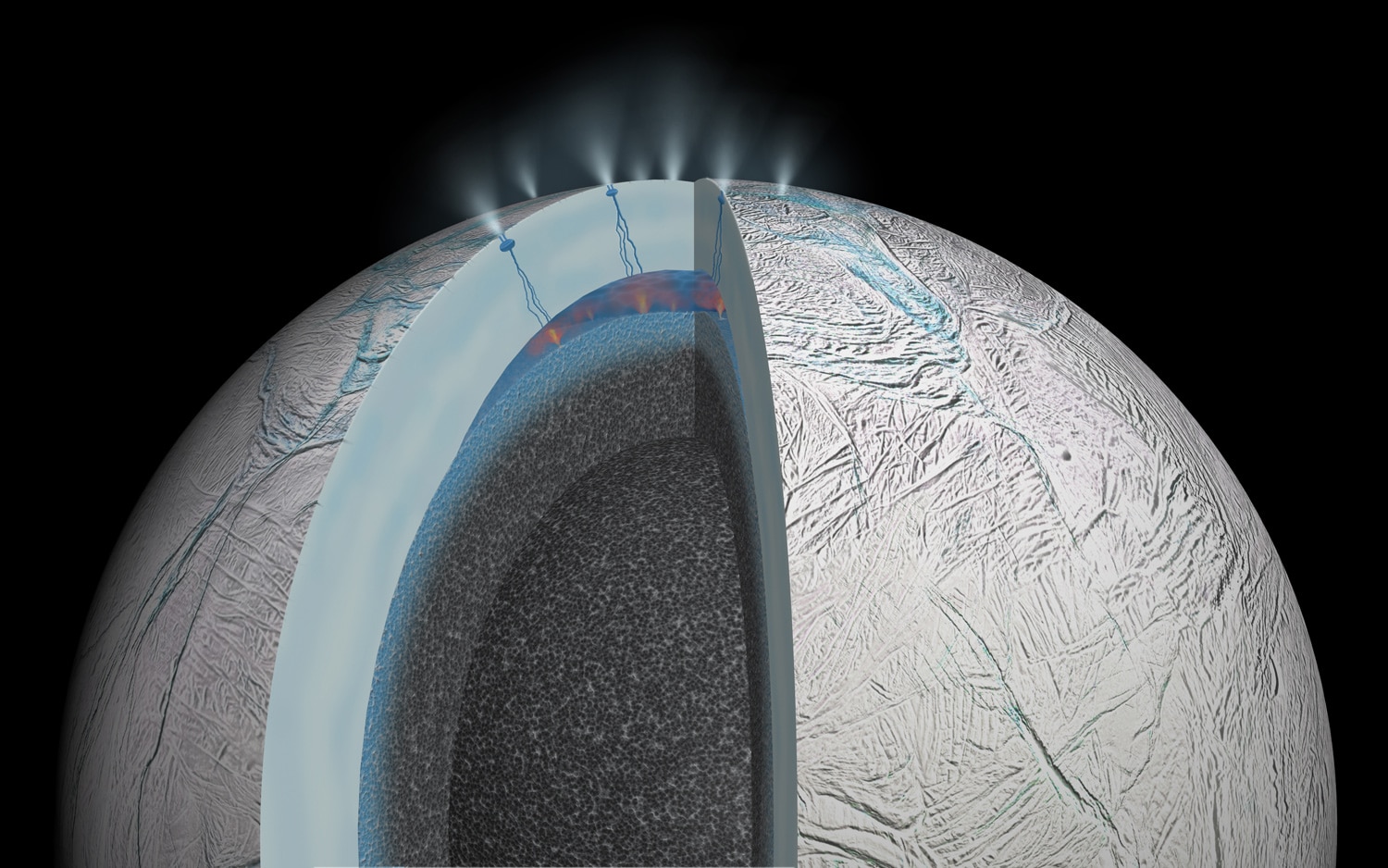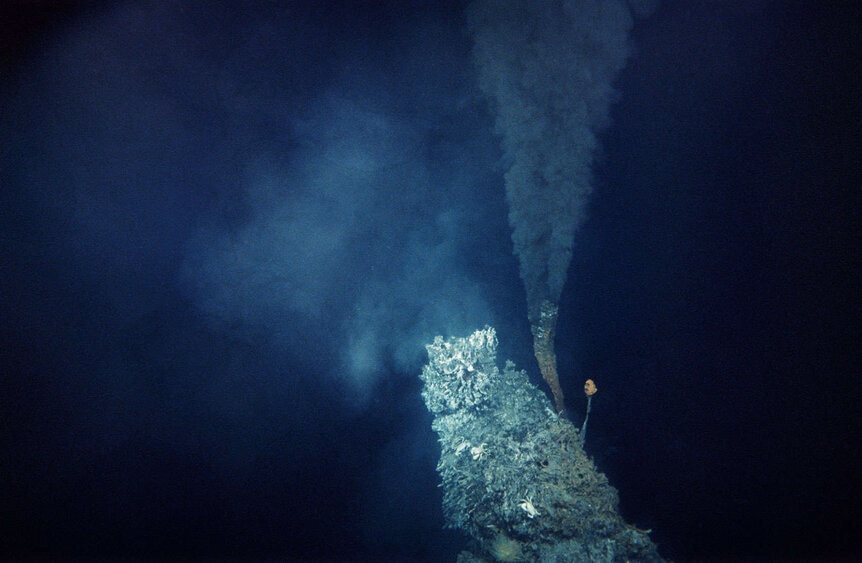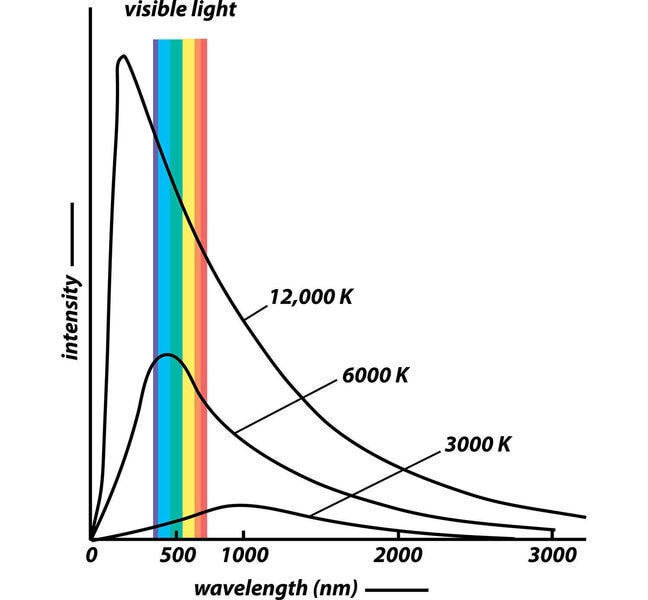Create a free profile to get unlimited access to exclusive videos, sweepstakes, and more!
Deep sea bacteria spurn the Sun, instead using Earth's internal heat for photosynthesis

Deep sea bacteria found that use the glow of Earth's internal heat for photosynthesis
Last week, Science Twitter was all abuzz about a paper that came out in the Proceedings of the National Academy of Sciences about a bacterium found at the ocean floor off the coast of Mexico. It was first tweeted by planetary scientist Michael Malaska:
It took me a second to take this in, but when I grokked it I gasped. I hadn't heard of anything quite like this (despite the paper being published in 2005), and it's pretty amazing.
Basically, this species of bacterium has chlorophyll in it, like plants do on Earth's surface. You might expect that means it uses sunlight as an energy source, but no. Instead, this bacterium uses the extremely feeble near-infrared light emitted by the heat of the vent to make food for itself.
That's so bizarre. Photosynthesis without sunlight!
The bacterium was found in the East Pacific Rise, a region a few hundred miles south of Mexico where several tectonic plates meet. Along the plate boundary is a chain of vents, cracks in the sea floor where heat from below leaks up, as well as a lot of chemicals we would consider noxious, like hydrogen sulfide (the chemical responsible for rotten egg smell). The vents are nicknamed "black smokers" because of the plumes of material billowing out of them.
Despite the depth (over two kilometers down), lack of sunlight, extreme pressure, and hellish 400° C (750° F) heat near these vents, life flourishes there, including bacteria.
There's not much (or any) free oxygen in the water there like other places, but the bacteria are anaerobic; they don't use oxygen from the water to metabolize food for fuel. Instead, they use the sulfur from the hydrogen sulfide. That much has been known for a while.
These bacteria thrive in the water near the vents, but a team of scientists wondered if they survived right on the vents, and how. They got a sample of water from about 50 centimeters away from a vent, and grew the bacteria they found there. They resembled green sulfur bacteria (GSB) that live in The Black Sea at relatively shallow depths, about 150 meters down. The sunlight at that depth is feeble, but those GSB have chlorophyll in them and still maintain photosynthesis. Chlorophyll absorbs certain wavelengths of light very efficiently, allowing the bacteria to access that energy for their metabolisms.
But these new GSB-like bacteria are from more than 2,000 meters down, where no sunlight can get through at all. So where do they get light?
The scientists posit that it's from the heat of the vents! In very basic terms, a hot object emits light, and the kind of light it emits depends on how hot it is. If you graph how much energy it emits versus wavelength (called a "blackbody curve") you get a skewed bell curve that rises sharply in the blue end to a peak, then tails off more gradually to the red.
The Sun is at about 5,500° C (nearly 10,000° F) and peaks in visible light, but also emits from the near ultraviolet well out into the far infrared. A hotter object peaks in the ultraviolet, a cooler one in the infrared.
The vents on the ocean floor are not nearly as hot as the Sun. They peak in the infrared, but they do emit some visible light. Not a whole lot; you'd need a sensitive camera to pick it up. But it's there, and the scientists think the new bacterium, which they call GSB1, absorbs light from the vent at about 750 nanometers, right at the reddest edge of what the human eye can see, on the border of infrared.
So these bacteria don't need the Sun, even though they use chlorophyll like plants do to turn light into useable energy.
I love this whole thing. It's a perfect overlap of chemistry, biology, physics, geology, even astronomy.
Wait. Astronomy?
Well, yeah. We know that vents like these might exist on some icy moons like Saturn's Enceladus and Jupiter's Europa. Both moons have a thick shell of ice surrounding an ocean of water kept hot by interactions with the gravity of their host planet. There's indirect evidence both moons could have vents similar to the ones in the East Pacific Rise, too. The idea that life can exist on Earth near and even on the vents implies it could on those moons, too.
We don't know if life can arise near these vents, or if it needs even better conditions and then adapts to life there. But it's possible that life on Earth originated near vents like these. Why not life elsewhere?
Life is weird. Just recently it was announced that some microbes that live in the marine sediment use chemicals that are made from the irradiation of water — hydrogen and oxidants created when naturally occurring radiation splits apart water molecules. It was thought that most marine sediment microbes lived off the products of photosynthesis, but it looks like this type of indirectly-radiation-fed microbe is extremely common, and may even be dominant in the seafloor. Similar bacteria that live of off minerals made in the radioactive decay in rocks have been found deep in South African gold mines, too.
We still don't know if life exists elsewhere in the Universe. Perhaps it's easy for life to get started and conditions for it are everywhere. Or maybe we just got phenomenally lucky and it's extraordinarily rare. Thing is, we just don't know.
The only way to truly find out is to seek out new life on strange new worlds. That's what Perseverance is doing on Mars, and hopefully other probes will do so soon on Europa and Enceladus as well… even Titan, Saturn's planet-sized moon.
Is Earth biology unique? No one knows. But we're going to find out.

















